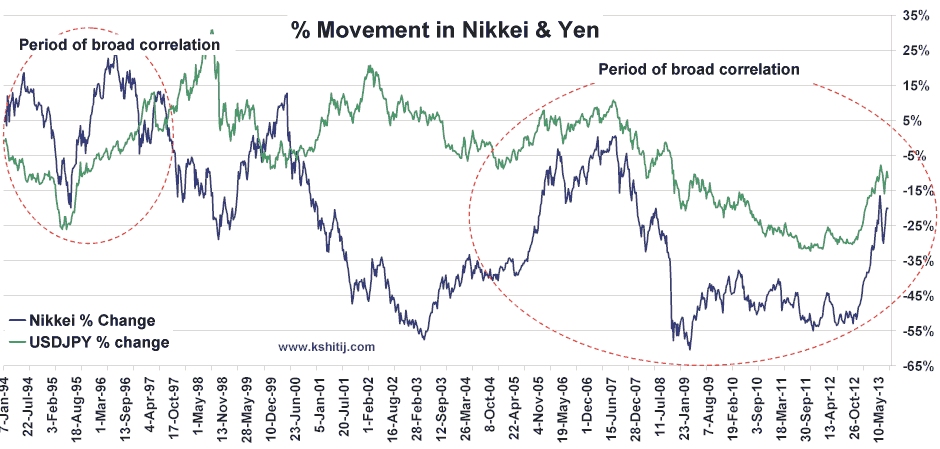
INTERVIEW
Beyond The Horizon

Vikram Murarka has been forecasting, trading, and hedging currencies since 1991. Beginning his career as a currency trader at Essar Group, he managed a forex exposure of $1.2 billion. In 1996 he founded Kshitij Consultancy Services, a leading forex risk management advisory firm in India. He regularly writes on forex risk management issues, including a series titled “Color Of Money.” He has contributed articles to this magazine as well as to industry journals such as the Euromoney Foreign Exchange Handbook (UK), Global Treasury News (UK), The Outlook Magazine (India) and in financial newspapers such as the Hindu Business Line in India. Since 2010, the Reserve Bank of India (RBI) has been including his currency forecasts in its quarterly Professional Forecasters’ Survey, which sometimes serves as an input for policymaking.
Stocks & Commodities Editor Jayanthi Gopalakrishnan interviewed Murarka via Skype and email in mid-July 2013.
Tell us a little bit about yourself. How did you get interested in the financial markets and specifically the forex market?
My getting into the forex market was an accident I would say, a bit like Obelix falling into the cauldron of magic potion. I was in my first job, in the finance department of a large conglomerate — Essar Steel — in Mumbai. Initially, I was given odd jobs like depositing checks into the bank and filing papers.
Slowly, I found myself helping a coworker who used to do the hedge transactions (forward contracts) for the company, negotiating the rates with the banks. The company had a very large forex loan book, some $1.2 billion in 1991, and the hedges were to mitigate the forex risk on these loans.
I remember she didn’t use to file any papers or keep any records. The bosses were not very happy about that, of course. I took it on myself to build a filing system and keep proper track of the forward contracts we entered into — in those days, it was all calculators and large paper registers. At one point, I was asked to stand in for her when she took a marriage leave. But when she returned after a couple of months, I was not asked to discontinue. Rather, they reassigned her to another post. Incidentally, she resigned shortly thereafter.
The global currency market is the closest you can come to the utopian economic concept of perfect competition.The moral of the story: If you want to get into forex, file papers.
Going further into history, maybe it was destiny. I do remember being intrigued by currency rates even as a nine-year-old kid and later in college where I studied economics. I remember asking my professor what determined the currency rates between different countries. She was flummoxed. I don’t blame her. I am sometimes still flummoxed today!
Why is that?
In 1987, the foreign exchange market did not exist in India. It was a totally administered state, so I don’t think anybody had a clue about the forex market outside of the Reserve Bank of India. So my teacher was not aware as to how currency rates were determined. I am still flummoxed today because it is not really fundamentals between two countries that set the exchange rate; it has a lot to do with capital flow and sentiment. Ultimately, you will have to fall back on the technicals.
What should traders or investors pay attention to in the forex markets?
Interest rates between different countries are the most important things to watch out for in the forex market. And since interest rates are a function of inflation and central bank policy, the macro economic numbers need to be tracked. Since the macro economic numbers are a function of inflation, we look at the consumer price index (CPI), money supply, size of the balance sheet of the Fed, of the Bank of Japan, and US unemployment figures, among others.

FIGURE 1: NIKKEI/YEN. Movements in the yen affect the Nikkei. Here you see the periods of correlation between the Nikkei and the USDJPY.